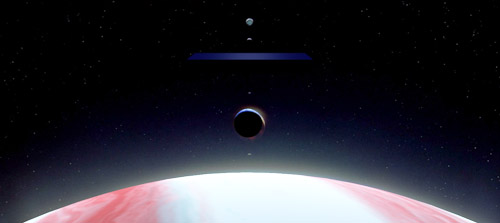The Importance of Water on Mercury.
As I’m sure you’ve heard by now, THERE’S WATER ICE ON MERCURY!! Not CO2 ice like on Mars, but H2O ice like found on Earth.
I know, sounds crazy… It’s the closest planet to our Sun with surface temperatures reaching 450C. However, thanks to some neat geography, areas of the planet near the poles are shrouded in constant darkness. Because there’s little to no atmosphere to transfer heat to these areas, the temperature stays WAY below the freezing point (around -170C).

-Areas in red represent spots in constant darkness. Yellow indicates areas of water-ice-
Ok, so this is cool and all, but why is this so important? Beyond the fact that the Earth-centric view of life revolves around water, fresh water such as the pure H2O found on Mercury is incredibly rare, even on a wet planet like Earth. 70% of the Earth’s surface is covered with water, but only 2.5% of that is fresh water. Humans, along with a great deal of other creatures on our little marble, need fresh water to survive (along with other benefits). Annually, we go through approx.. 64 TRILLION letres of fresh water. Mercury has 22 cubic miles of water ice that we’ve detected. That translates to an approximate 91.7 trillion letters of water locked away. Its a small, but important amount as that is equal to the global usage of fresh water for nearly a year and a half. Given how irresponsible we are with our natural resources, it’s projected that in the next little while, water will be the subject of a resource war. There has been talk of mitigating this by mining asteroids and comets and searching the rest of our solar system for water or water-ice, but this is difficult for a few reasons.
Mining Comets
Comets are mostly made of ice, so it’s a logical choice for H2O mining. The problem is, comets are usually in highly elliptical (oval) orbits and as such, are only around for short periods. Timing to get to them takes a great deal of preparation. Mining would be a one shot deal akin to train robbery. Hit it, take what you can, and GTFO. Not ideal for a steady flow of resources
Mining Asteroids.
Asteroids are in a more stable orbit, and are more accessible as they surround our orbit (plus there’s a HUGE amount of them). The issue here is that they’re out past the orbit of Mars. We keep talking about how close Mars is to us, but it’s actually farther away from us than Venus is. Comparing distances, the asteroid belt is about as far away from us as we are from the Sun. This is a HUGE distance.
Mercury is actually closer to us than the asteroid belt (as I said, the belt is as far from us as the Sun) as Mercury is closer to us than the Sun on a regular basis. Combined with the fact that the polar regions of mercury can afford near constant solar power generation, the costs of getting there and powering a mining operation are greatly reduced.
Of course, water-ice on Mercury is also important because it shows that we live in a solar system abundant in H20. This infographic shows just how wet our system is. There’s actually more water on Jupiter’s moon Europa than there is on our entire planet, but we have yet to analyze it to know if it’s fresh water or not. As well, we must decide if we are to heed the warning of the Monolith…
“All these worlds are yours, except Europa. Attempt no landing there.”
I say, “Allons-y!”








